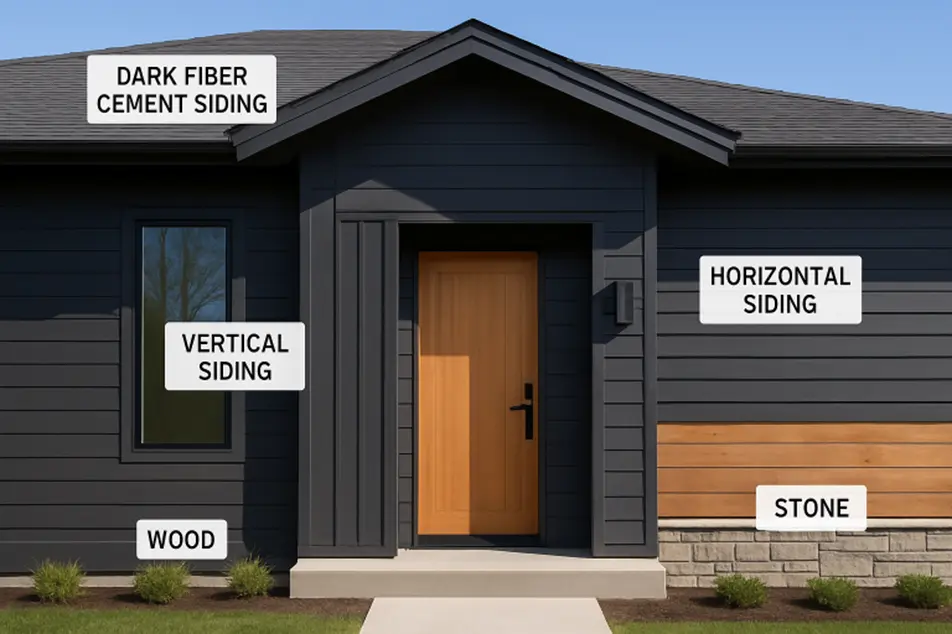Siding Options for Modern Homes: Trends and Materials
The exterior of a modern home is shaped as much by its resilience as by its visual appeal. Selecting the appropriate siding material influences both the lifespan of your home’s protective layer and the way it reflects your personal taste. Thanks to advances in siding technology, homeowners can now seamlessly blend style, sustainability, and functionality in their choices. For anyone considering popular options, familiarizing themselves with the available materials is essential for making a wise, long-term investment.
The evolution of siding trends sees a merger between classic appearances and modern technological enhancements. From advanced insulation to bold new colors, siding is now a central part of building design. Today’s market offers a rich variety of products that deliver on durability, longevity, and visual impact. For instance, many homeowners weigh James Hardie siding vs vinyl, comparing the fiber-cement strength and long-term performance of Hardie products with the affordability and low-maintenance appeal of vinyl. Whether you favor a traditional look or a cutting-edge contemporary style, the choices you make will shape your home’s exterior for decades.
Fiber Cement Siding: A Durable Choice
Fiber cement siding is gaining ground for its blend of strength and versatility. Made from a mix of cement, sand, and cellulose fibers, this material excels at imitating the texture and look of natural wood without wood’s vulnerabilities. Fiber cement withstands harsh weather, resists pests and fire, and requires little maintenance over its lifetime. For homeowners who want the timeless beauty of real wood alongside reliable protection, fiber cement is a top pick. Beyond its visual appeal, this material can be painted or finished in a wide array of colors, allowing for complete customization.
Embracing Eco-Friendly Materials
Sustainability is a leading priority in modern home design. As awareness around environmental impacts grows, manufacturers are responding with eco-friendly siding materials crafted from recycled or renewable resources. Options such as reclaimed wood, engineered wood, and particular brands of fiber cement reduce waste and emissions. Additionally, many companies now offer siding that incorporates recycled content while still providing excellent durability and curb appeal. These sustainable materials frequently offer distinctive patterns, textures, and finishes that set your home apart while treading lightly on the planet.
Vertical Siding and Mixed Textures
One of the most striking trends in exterior design is the use of vertical siding panels. This orientation draws the eye upward, adding a sense of height that’s especially effective on modern, minimalist homes. Vertical panels often serve as an accent or work in tandem with horizontal siding, brick, or stone to create visual interest. When different textures are combined, such as smooth panels next to rough-hewn stone or crisp metal alongside warm cedar, the result is a layered and architecturally sophisticated façade. Highlighting architectural flourishes with carefully chosen mixes of textures can turn a simple exterior into a neighborhood standout.
Dark Color Palettes for Bold Statements
Modern homes are increasingly embracing bold, dark color palettes for their siding. Deep blues, dramatic charcoal grays, sleek blacks, and other rich hues offer a contemporary twist on classic exteriors. These colors make a bold statement and work well with both minimalist and maximalist home designs. Paired with lighter trim, wood accents, or colored doors, dark siding can create a sophisticated contrast that truly distinguishes a home. This trend is particularly popular in regions where contemporary architectural styles are gaining popularity, appealing to homeowners who want their property to make a distinctive visual impact.
Insulated Siding for Energy Efficiency
Adding insulated siding is an innovative solution for boosting both comfort and energy savings in the home. Insulated siding products come with a layer of rigid foam backing that increases the wall’s thermal resistance, reducing unwanted heat transfer. As a result, homeowners enjoy lower heating and cooling bills as well as improved indoor comfort year-round. For more tips on designing an energy-efficient home, visit Energy Saver’s guide to efficient home design. Today’s insulated siding is available in a range of styles and finishes, ensuring that improvements in energy efficiency never come at the expense of visual appeal. Upgrading your home’s exterior with insulated siding is a long-term investment that pays off through reduced energy costs and increased property value. Additionally, it can contribute to a more sustainable lifestyle by lowering your household’s overall energy consumption.
Combining Materials for Unique Designs
Personalization is a hallmark of contemporary exterior architecture, with more homeowners seeking ways to break away from cookie-cutter façades. Combining different siding materials — such as warm natural wood with industrial metal, or classic brick with low-maintenance fiber cement — creates visual interest and tells a unique story. These mixed-material designs can highlight certain features of the home, such as emphasizing an entryway or creating a striking accent wall. Customizing textures, materials, and finishes invites creativity, allowing homeowners to craft exterior spaces that truly reflect their tastes and lifestyle.
Conclusion
Modern siding materials combine timeless appeal with technological innovation, offering resilience, sustainability, and incredible design flexibility. By keeping up with current trends and exploring the latest options, you can choose a siding solution that maximizes both your home’s protection and its curb appeal for years to come.

